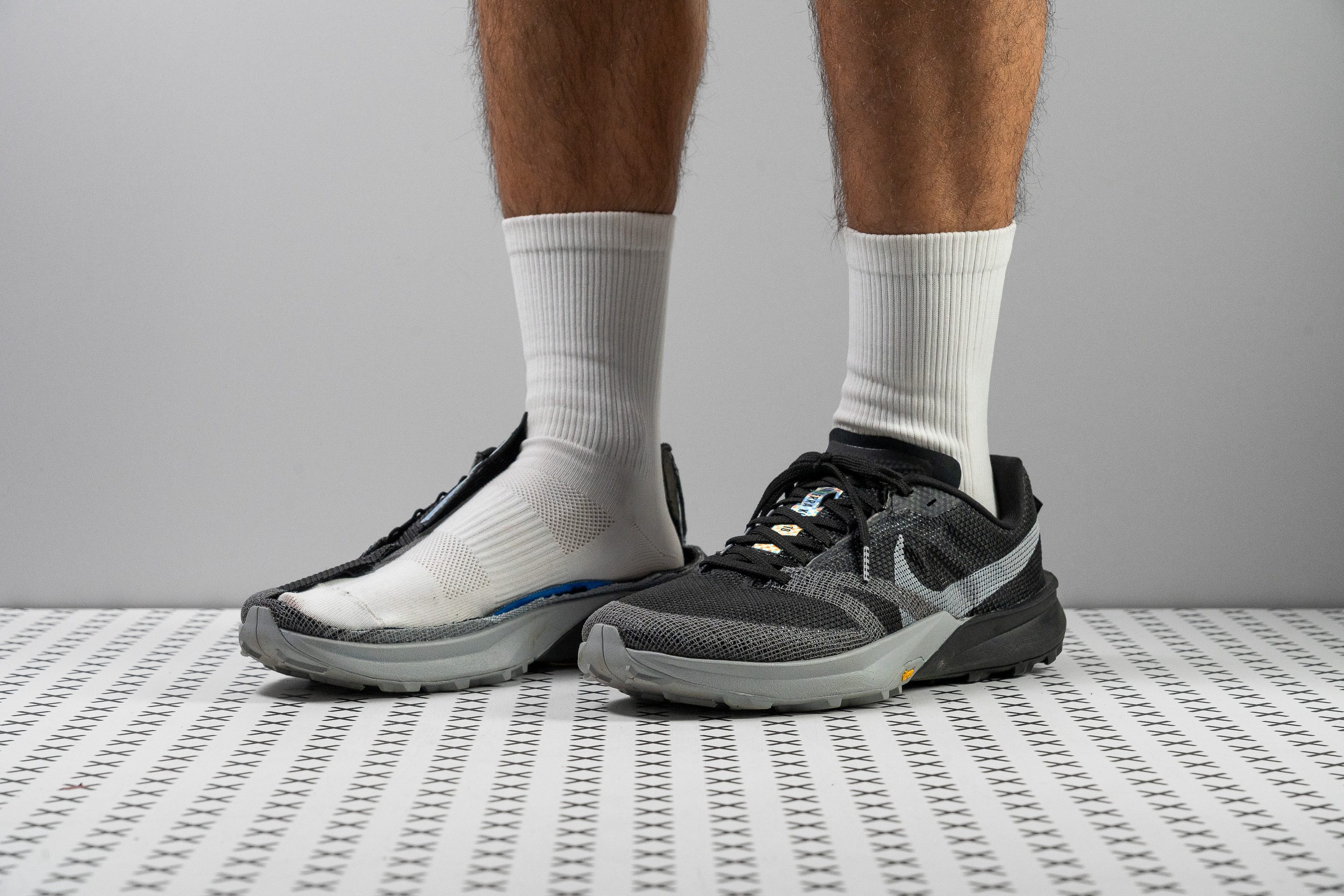Our verdict
Pros
- Vibram Megagrip outsole upgrade
- Roomy fit for a Nike design
- Excellent durability from heel to toe
- Fun, quick ride
- Lighter than version 9
- Ideal for short distances
- High-quality upper breathes well
- Well-spaced lugs for varied terrain
- Amazing control on corners
- Flexible forefoot rock plate
Cons
- Needs a better foam
- Not for long distances
- Low drop limits versatility
- Comfort is far from amazing
Audience verdict
Comparison
The most similar running shoes compared
+ + Add a shoe | |||||
|---|---|---|---|---|---|
| Audience score | 77 Decent! | 87 Great! | 77 Decent! | 90 Superb! | |
| Price | $160 | $180 | $140 | $150 | |
| Trail terrain | LightModerate | Moderate | LightModerate | ModerateTechnical | |
| Arch support | Neutral | Neutral | Neutral | Neutral | |
| Weight lab Weight brand | 9.2 oz / 261g 9.3 oz / 263g | 10.7 oz / 302g 10.7 oz / 303g | 9.4 oz / 266g 9.7 oz / 275g | 10.2 oz / 288g 10.1 oz / 286g | |
| Drop lab Drop brand | 3.7 mm 5.0 mm | 4.0 mm 4.0 mm | 3.7 mm 4.0 mm | 4.4 mm 3.0 mm | |
| Strike pattern | Mid/forefoot | Mid/forefoot | Mid/forefoot | Mid/forefoot | |
| Size | Slightly small | True to size | True to size | True to size | |
| Midsole softness | Soft | Soft | Soft | Soft | |
| Difference in midsole softness in cold | Big | Small | Small | Normal | |
| Plate | Rock plate | ✗ | Rock plate | ✗ | |
| Toebox durability | Very good | Good | Good | Very good | |
| Heel padding durability | Good | Good | Decent | Decent | |
| Outsole durability | Good | Good | Good | - | |
| Breathability | Breathable | Moderate | Moderate | Moderate | |
| Width / fit | Medium | Medium | Medium | Medium | |
| Toebox width | Wide | Wide | Narrow | Medium | |
| Stiffness | Moderate | Moderate | Moderate | Stiff | |
| Torsional rigidity | Flexible | Stiff | Flexible | Moderate | |
| Heel counter stiffness | Moderate | Flexible | Moderate | Moderate | |
| Lug depth | 3.3 mm | 4.0 mm | 4.7 mm | 4.4 mm | |
| Heel stack lab Heel stack brand | 28.3 mm 29.0 mm | 30.3 mm 36.0 mm | 29.5 mm 28.0 mm | 30.1 mm 31.0 mm | |
| Forefoot lab Forefoot brand | 24.6 mm 24.0 mm | 26.3 mm 32.0 mm | 25.8 mm 24.0 mm | 25.7 mm 28.0 mm | |
| Widths available | Normal | Normal | NormalWide | Normal | |
| Season | SummerAll seasons | All seasons | All seasons | All seasons | |
| Removable insole | ✓ | ✓ | ✓ | ✓ | |
| Orthotic friendly | ✓ | ✓ | ✓ | ✓ | |
| Ranking | #331 Bottom 10% | #144 Top 40% | #329 Bottom 10% | #36 Top 10% | |
| Popularity | #234 Bottom 36% | #94 Top 26% | #139 Top 38% | #294 Bottom 20% |
Who should buy
We endorse the Nike Kiger 10 for trail runners who:
- Want a shoe that feels agile and nimble underfoot for easy and moderate trails.
- Race short-distance trail events like vertical kilometers, where we found the quick ride and grippy outsole especially helpful.
- Thought the Terra Kiger 9 felt too heavy, since this new version is noticeably lighter.
- Only buy trail shoes with Vibram rubber and were waiting for this upgrade to arrive in the Kiger line.
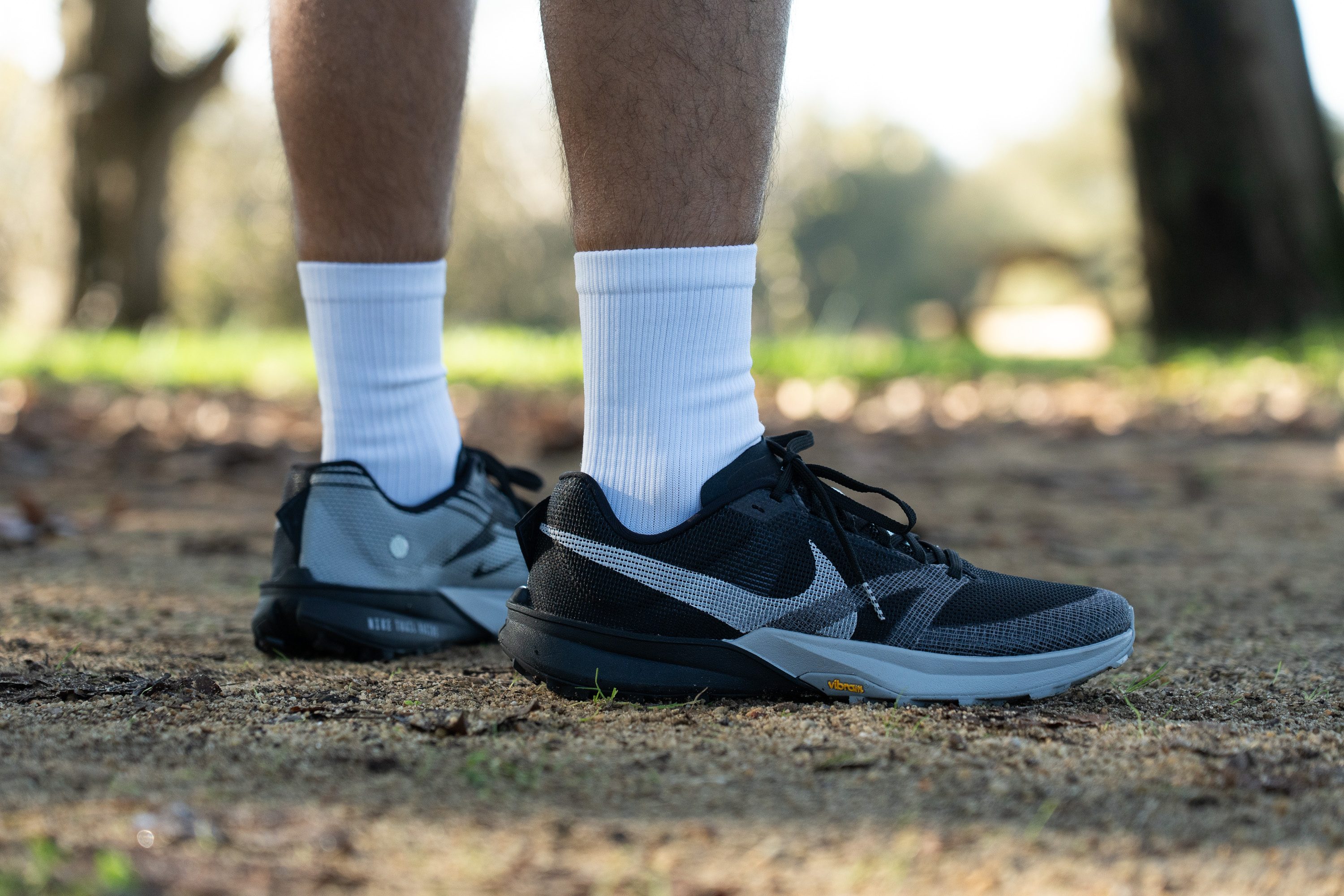
Who should NOT buy
The Kiger 10 is not the best pick for long-distance efforts because we discovered in the lab that its low-stack design and basic EVA foam lack the energy return and shock absorption needed for that. Runners wanting a more lively, long-distance-ready ride will find better options in shoes like the HOKA Tecton X 3 or the Saucony Xodus Ultra 4.
We also believe the low drop makes the Kiger 10 a poor match for heel strikers—based on our testing, the geometry feels awkward and forces extra work. Take a look at the NNormal Kjerag or the HOKA Zinal 2 instead.

Cushioning
Shock absorption
Being a classic racer with a low-profile and basic midsole, it is no surprise that the shock absorption is low.
The heel delivers an average 122 SA, while the forefoot posts only 82 SA, creating a ton of ground feel in the forefoot area and making the Kiger 10 suitable only for short or moderate distances, not for any kind of ultra running.
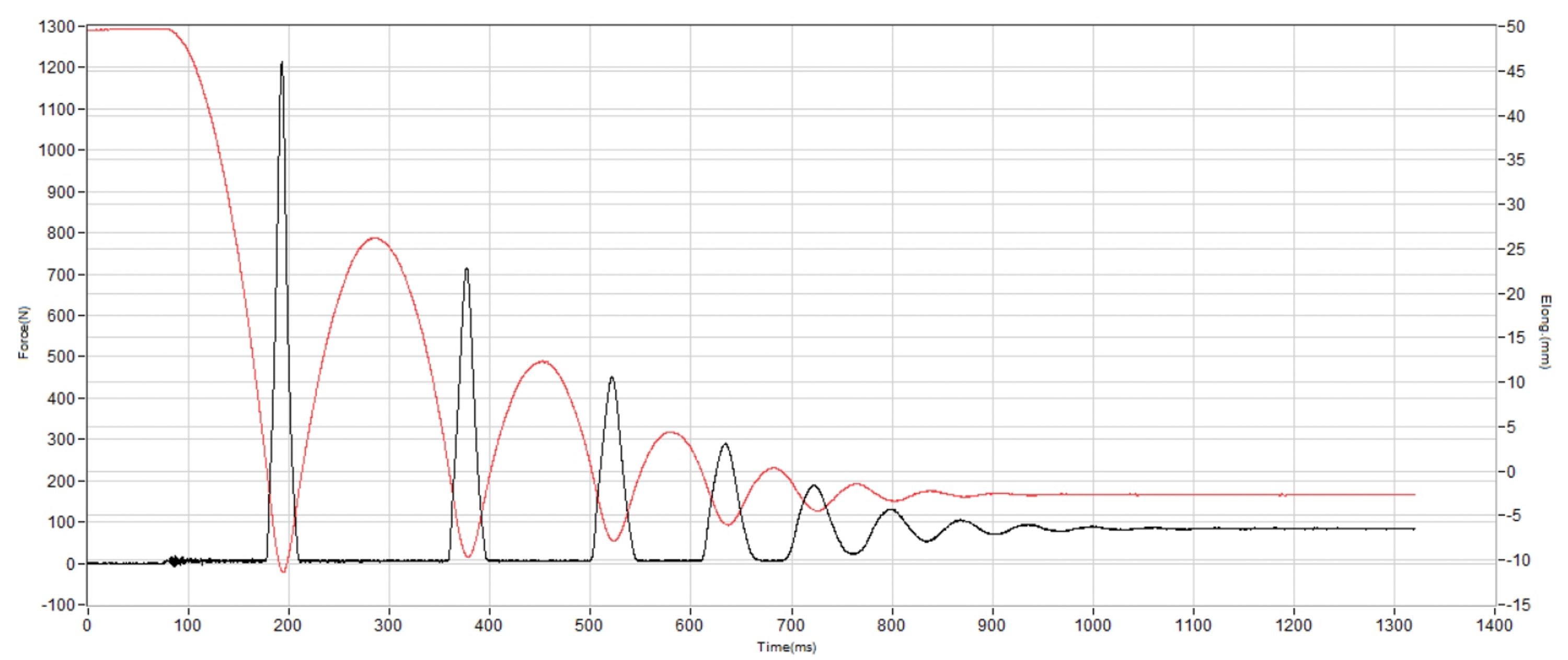
| Kiger 10 | 122 SA |
| Average | 122 SA |
Energy return
The foam used by Nike is the EVA-based Cushlon 3.0, and it was a bit of a surprise because Nike could have used something better, especially taking into account that this is a racing shoe for them.
As expected for an EVA foam, energy return is average and the ride is not very lively, with 55.9% in the heel and 58.3% in the forefoot. This shoe would've been amazing with ZoomX foam, even if it were the training variant used in shoes like the Nike Vomero Plus.
| Kiger 10 | 55.9% |
| Average | 55.6% |
Heel stack
In a world where running shoes keep growing every year, the Kiger follows a different route.

This is one of the very few updates we tested this year that arrives with less stack height in the heel than its predecessor, and we truly appreciate it. With 28.3 mm, it is almost 2 mm lower and clearly below average, and we fully support this choice because the market also needs shoes like this.
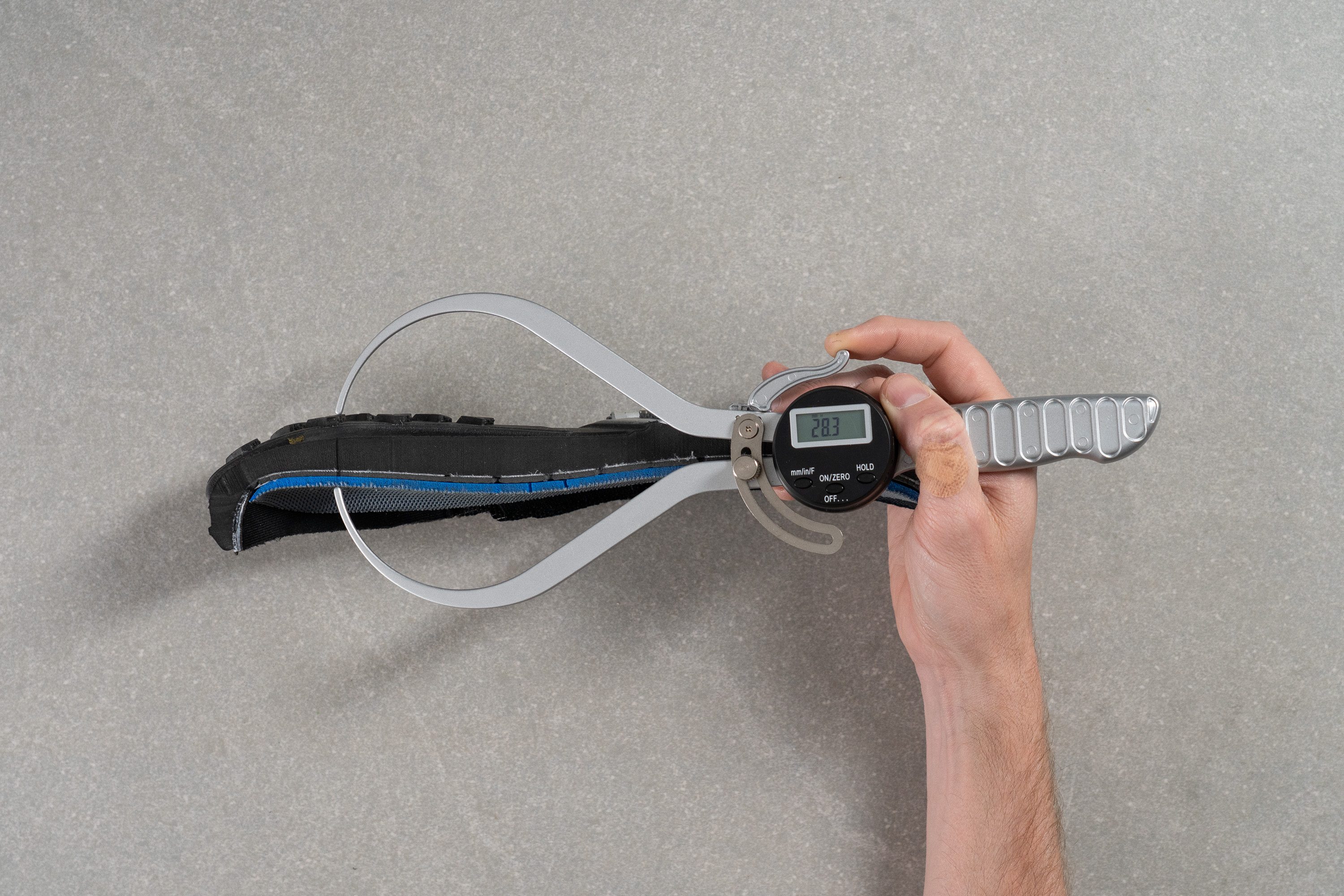
| Kiger 10 | 28.3 mm |
| Average | 32.6 mm |
Forefoot stack
The forefoot measures 24.6 mm, which feels like a good balance between cushioning and ground feel. This also shows that Nike used a different approach than usual with the midsole geometry, so let’s take a look at the drop.
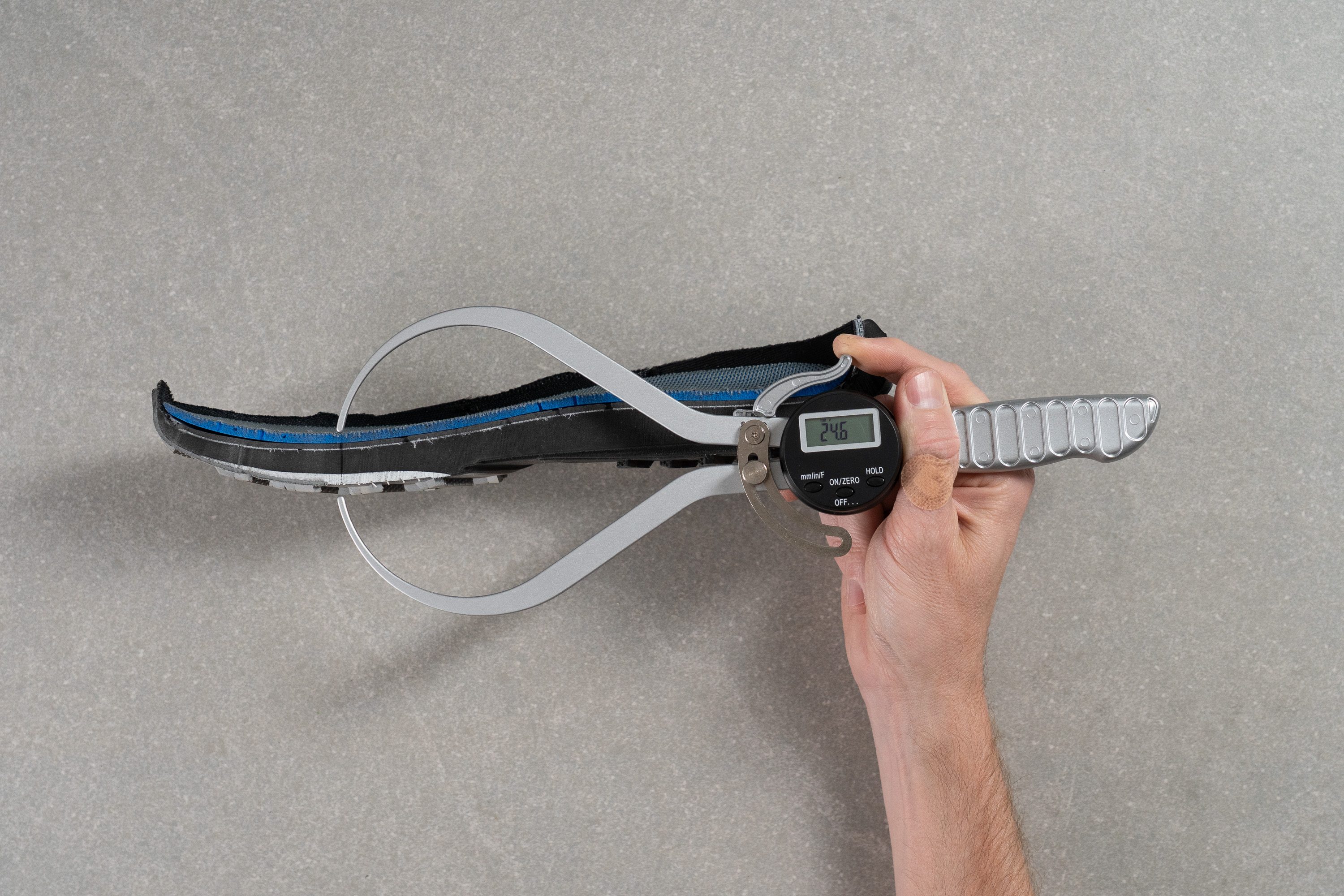
| Kiger 10 | 24.6 mm |
| Average | 25.1 mm |
Drop
Indeed, most trail shoes come with a high drop, but we measured the Kiger 10 at just 3.7 mm from heel to toe. That is even lower than the official 5 mm and makes it a great option for forefoot and midfoot strikers who want a more natural feel in a Nike shoe.
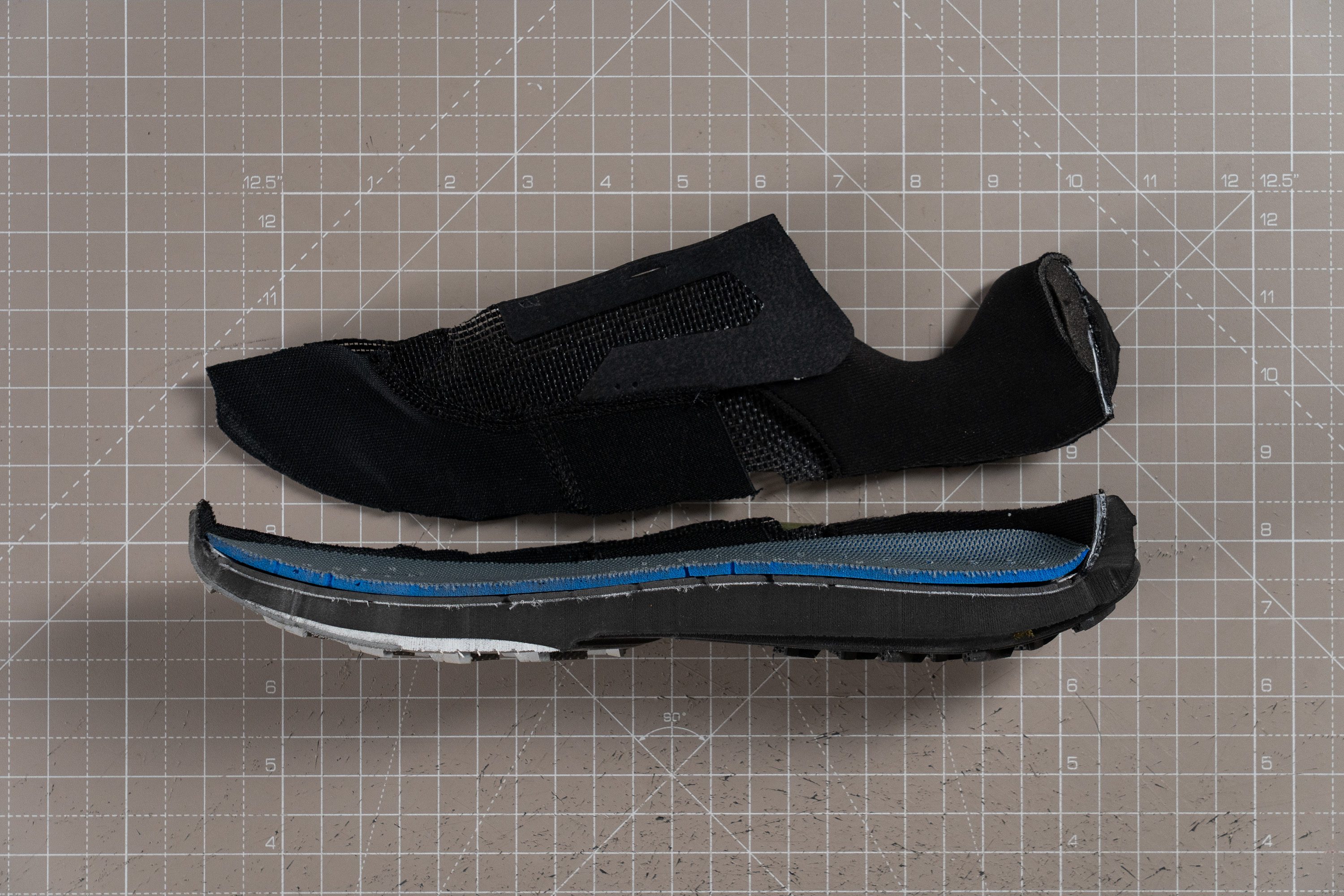
| Kiger 10 | 3.7 mm |
| Average | 7.6 mm |
Midsole softness
The Cushlon 3.0 foam delivers balanced softness on every stride, and it is far from being a plush foam. Nonetheless, that would have been a poor idea in a shoe with a moderate stack height like this one, especially for trail running.
Instead, we measured 19.0 HA, and it feels like a smart choice. Firmer would be too uncomfortable, and softer would not work because it would bottom out all the time.
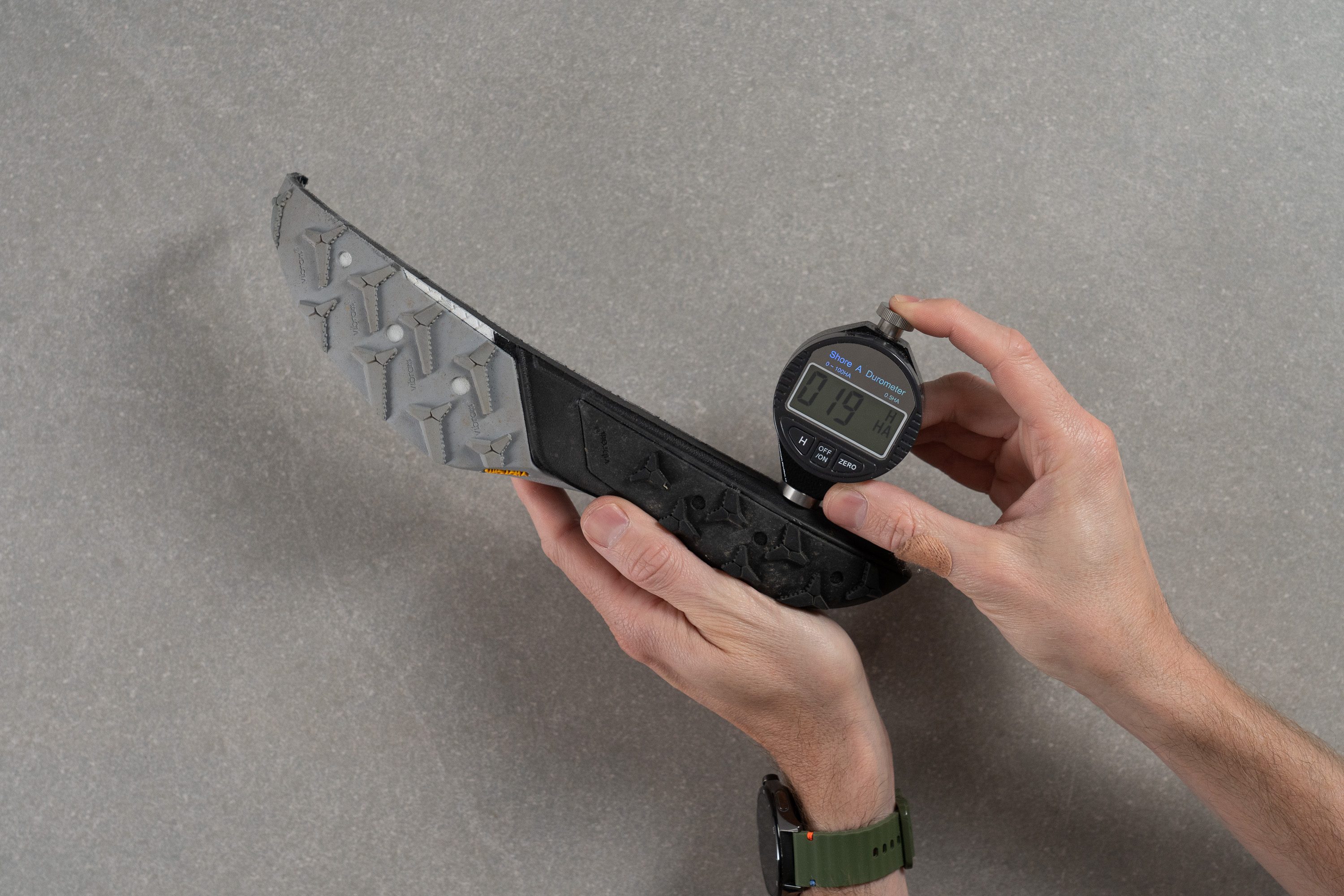
| Kiger 10 | 19.0 HA |
| Average | 21.9 HA |
Secondary foam softness
There is a secondary layer of extremely firm foam (91.0 HA) in the forefoot that works as a rock plate, working to protect your foot from potential hazards. It is easy to spot in our photo because Nike used a white foam for this part instead of the black Cushlon 3.0.
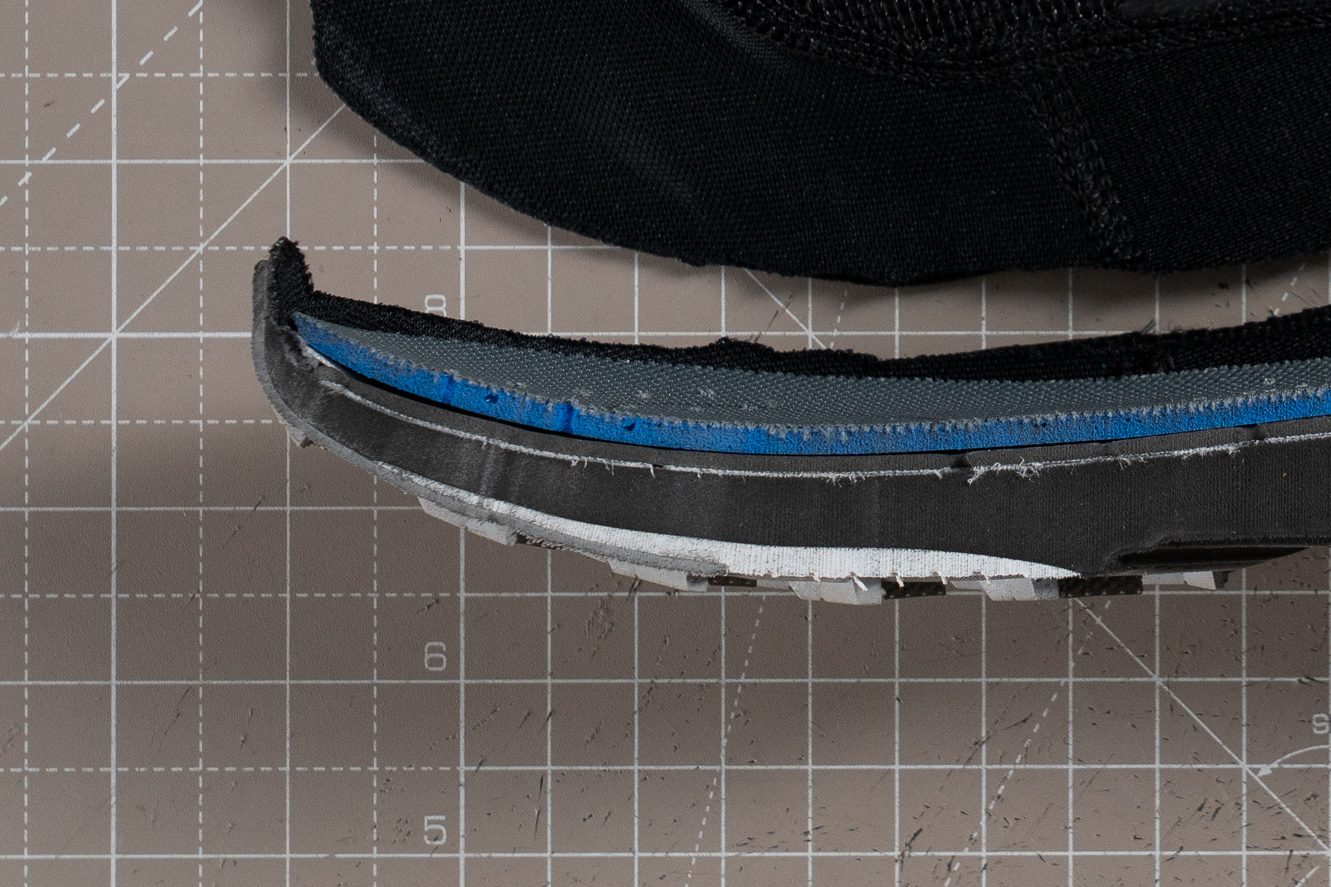
As it's made from firm foam, this is not the average rock plate that is extremely stiff. We think that Nike wanted to keep the flexibility of the shoe, and we support this approach.
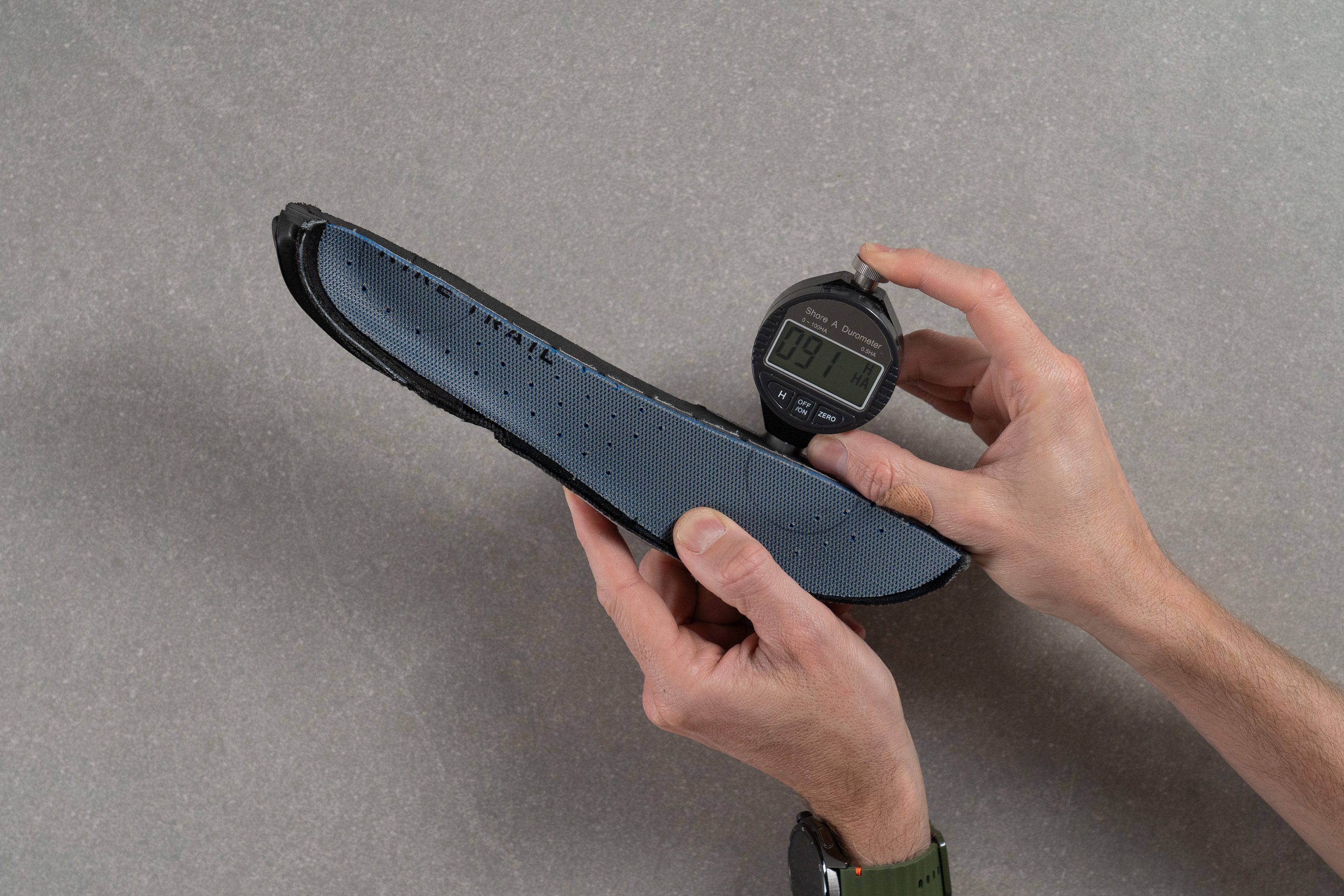
| Kiger 10 | 91.0 HA |
| Average | 25.5 HA |
Rocker
The Kiger 10 shows a classic forefoot and a curved heel that helps smooth transitions, which is especially important with its low drop.
We loved that the forefoot stays almost flat, unlike many recent trail designs. This flatter shape is possible because of the excellent flexibility of the shoe and gives a very natural feel underfoot, making it a great option for hiking or for runners who dislike how "assisted" modern running shoes can feel.
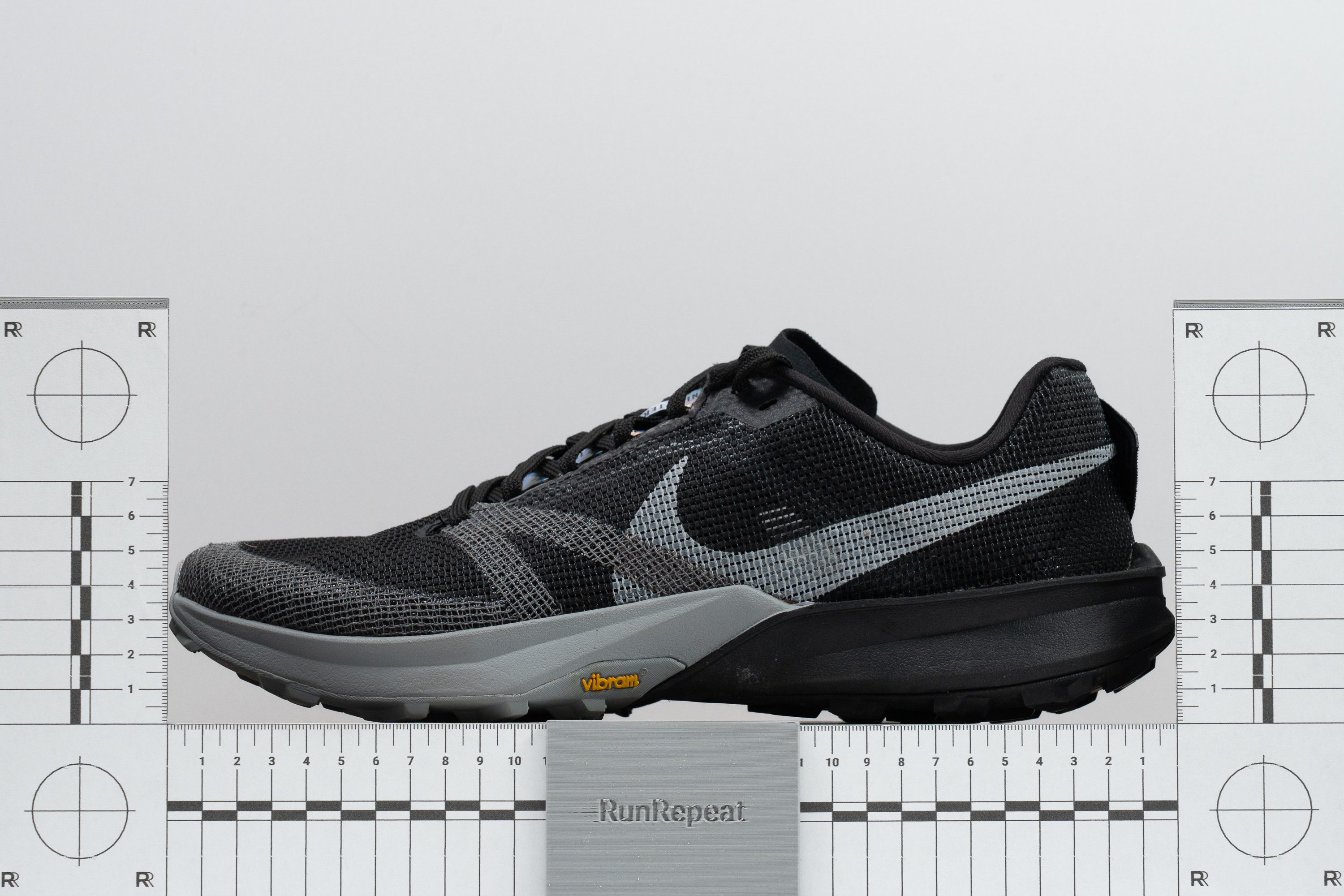
Size and fit
Size
Nike Kiger 10 fits slightly small (10 votes).
Width / Fit
Another unexpected trait of the Kiger 10, especially for a Nike shoe, is the roomy fit we noticed right after unboxing it and trying it on, giving the shoe a pleasant and comfortable first feel.
But the real test comes when we develop the gel mold from the interior and measure its exact size, and we discovered that our early impressions were right with a 97.4 mm reading.

| Kiger 10 | 97.4 mm |
| Average | 95.6 mm |
Toebox width
The second reading also confirmed our early impressions, once again going above the average measurement at 76.9 mm.

This is good news for many runners because the Kiger is not made in wide sizes.

| Kiger 10 | 76.9 mm |
| Average | 74.6 mm |
Toebox height
The height is not as roomy as the width, as we recorded 26.2 mm.
However, we are fully fine with this choice. The Kiger is built to run fast on twisty trails, where too much vertical space could reduce security during sharp movements.
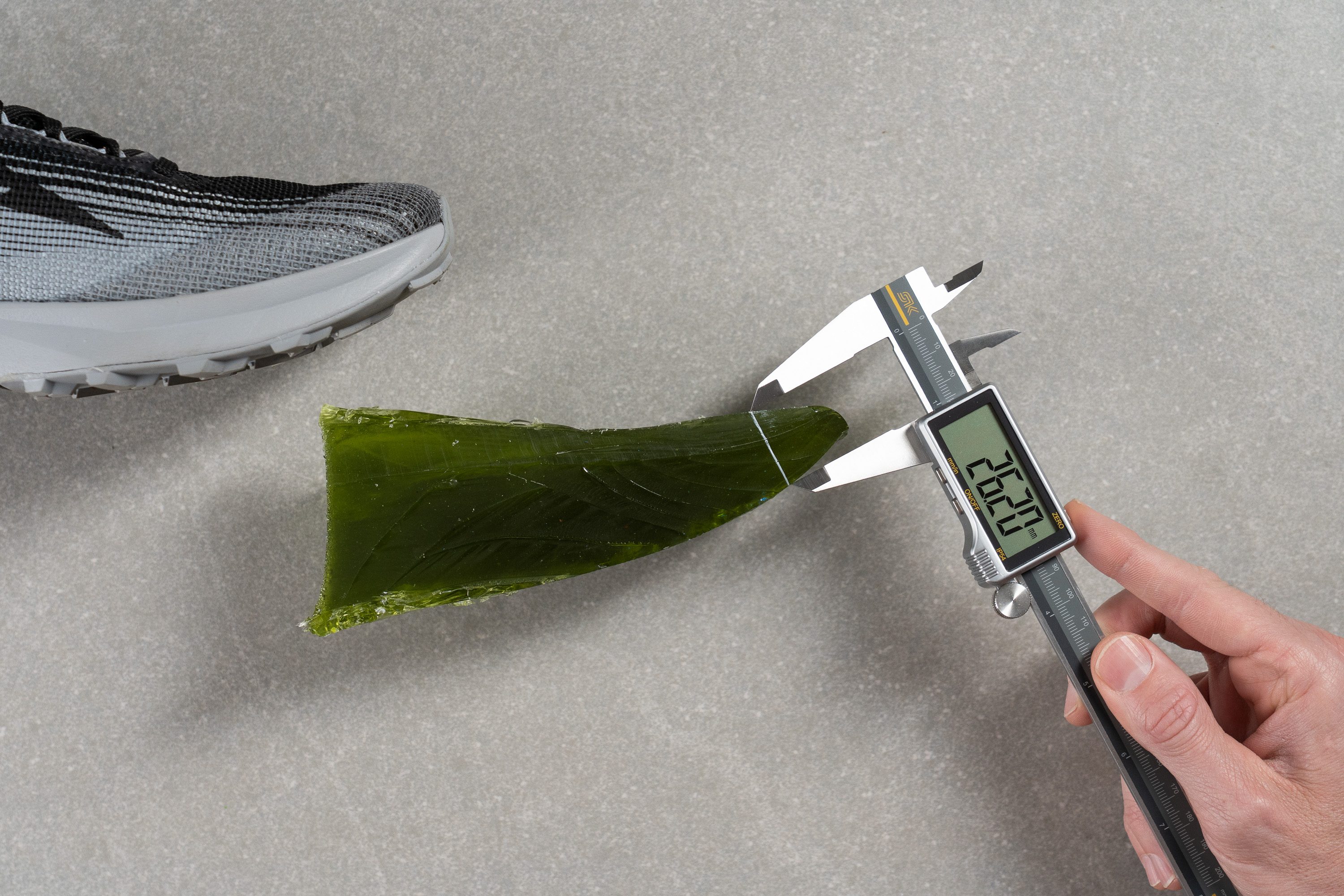
| Kiger 10 | 26.2 mm |
| Average | 27.0 mm |
Traction / Grip
Forefoot traction
One of the best news is that, finally, after many years of begging and pleading, Nike has started to adopt Vibram rubber widely in their trail lineup. Now it is not just the Ultrafly, but it is arriving to more and more shoes like the Zegama 2 or this Kiger 10.
Thanks to that, you get top-quality traction that we verified with a very solid 0.64 score. And durability should be excellent too, but we will cover that later.
| Kiger 10 | 0.64 |
| Average | 0.60 |
Lug depth
The lugs are on the shallow side at only 3.3 mm, so the shoe works great on easy trails, and we also recommend it for moderate terrain even though it does not reach 4 mm.
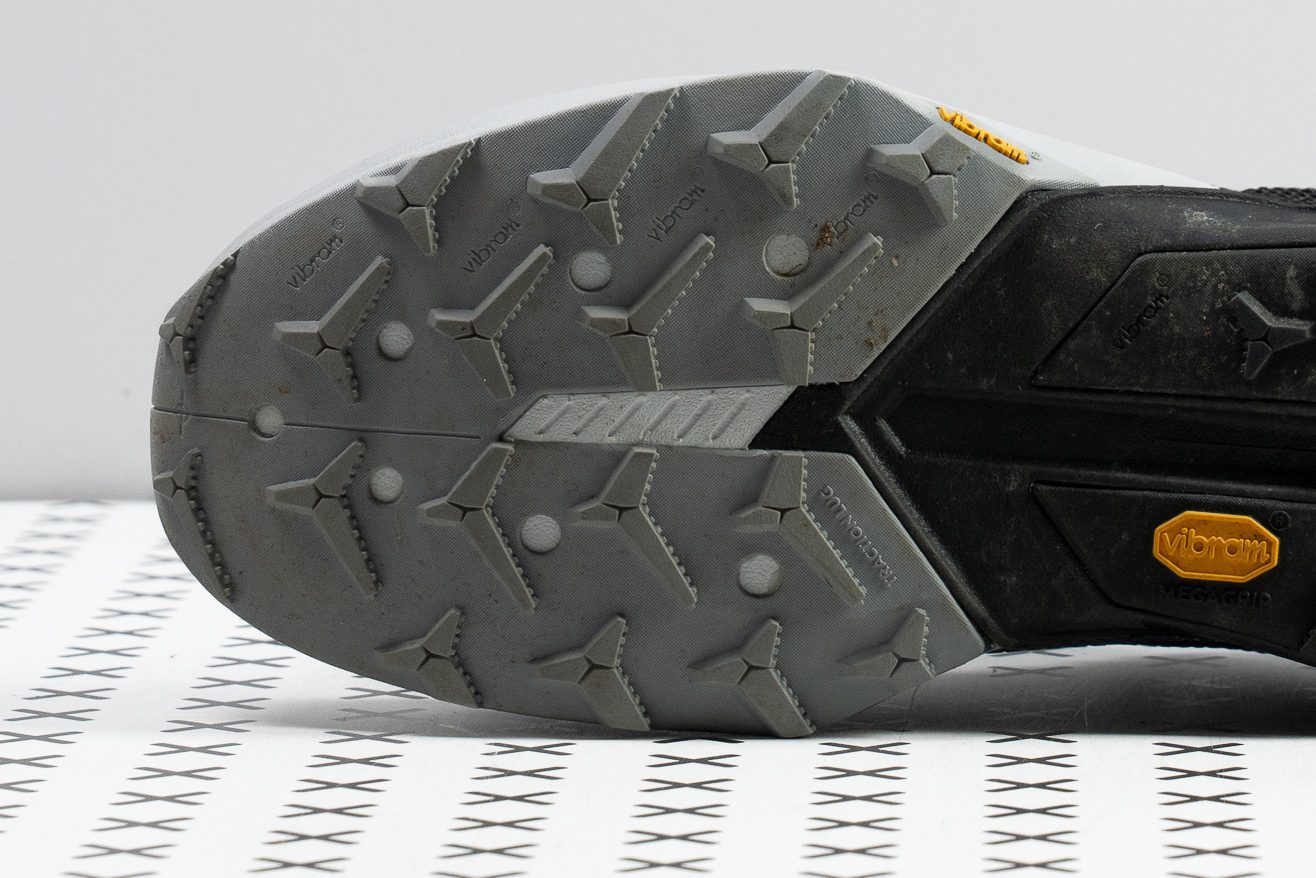
The strong performance of the Kiger 10 on moderate trails comes from the wide spacing between the lugs, their broad yet thin shape, and the Traction Lug technology from Vibram with those micro-dots to enhance grip. These elements work very well on a wide range of surfaces and weather conditions.
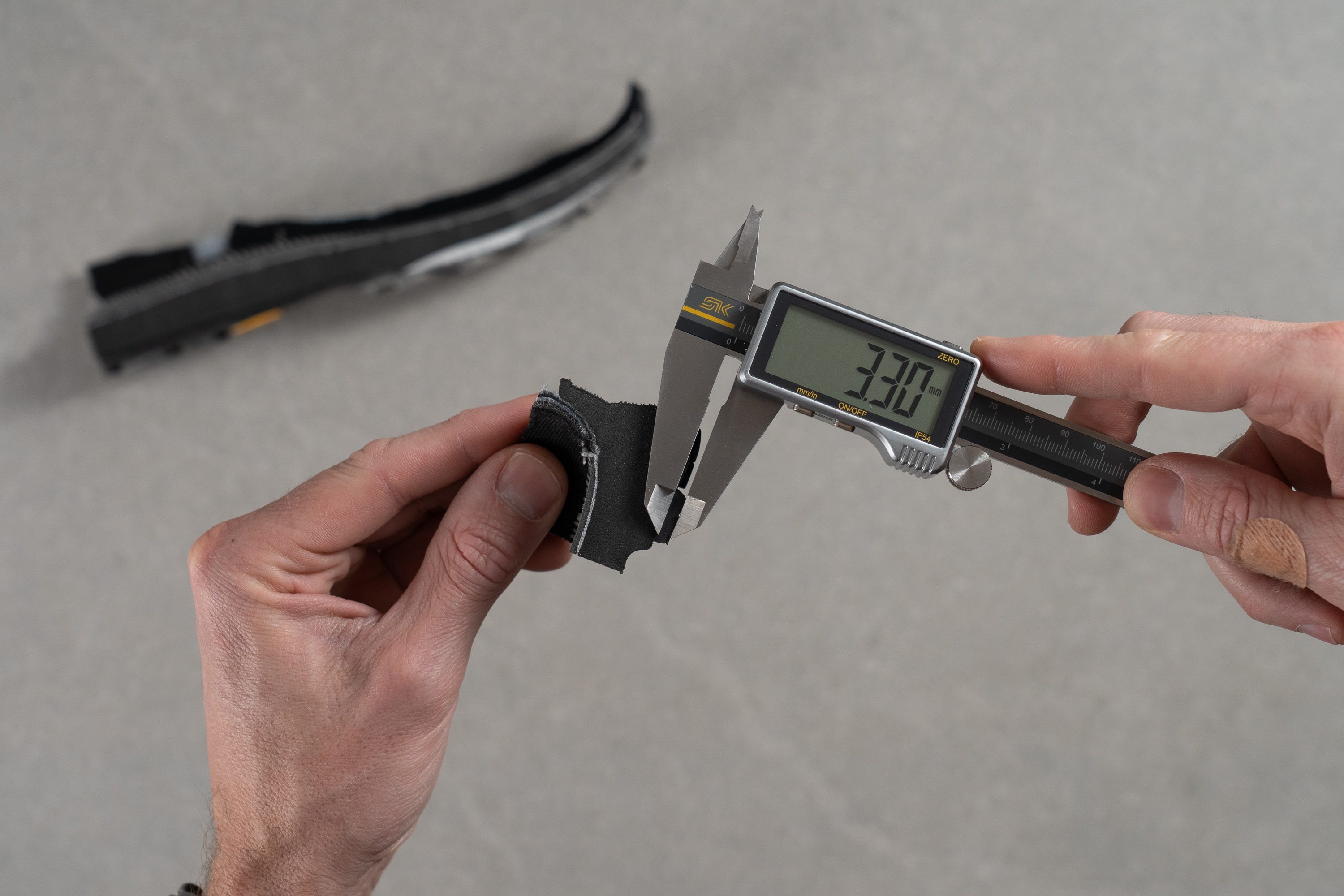
| Kiger 10 | 3.3 mm |
| Average | 3.5 mm |
Outsole design
A large central cutout runs from the heel to the forefoot, dividing the outsole into two main rubber sections. This long gap exposes the midsole foam along the entire center line, creating two separate lanes on each side that hold the lugs and give the outsole its segmented layout.
This type of outsole design works well for two purposes. First, it allows the shoe to flex torsionally and adapt to terrain changes. Second, it improves stability, especially for heel and midfoot strikers.
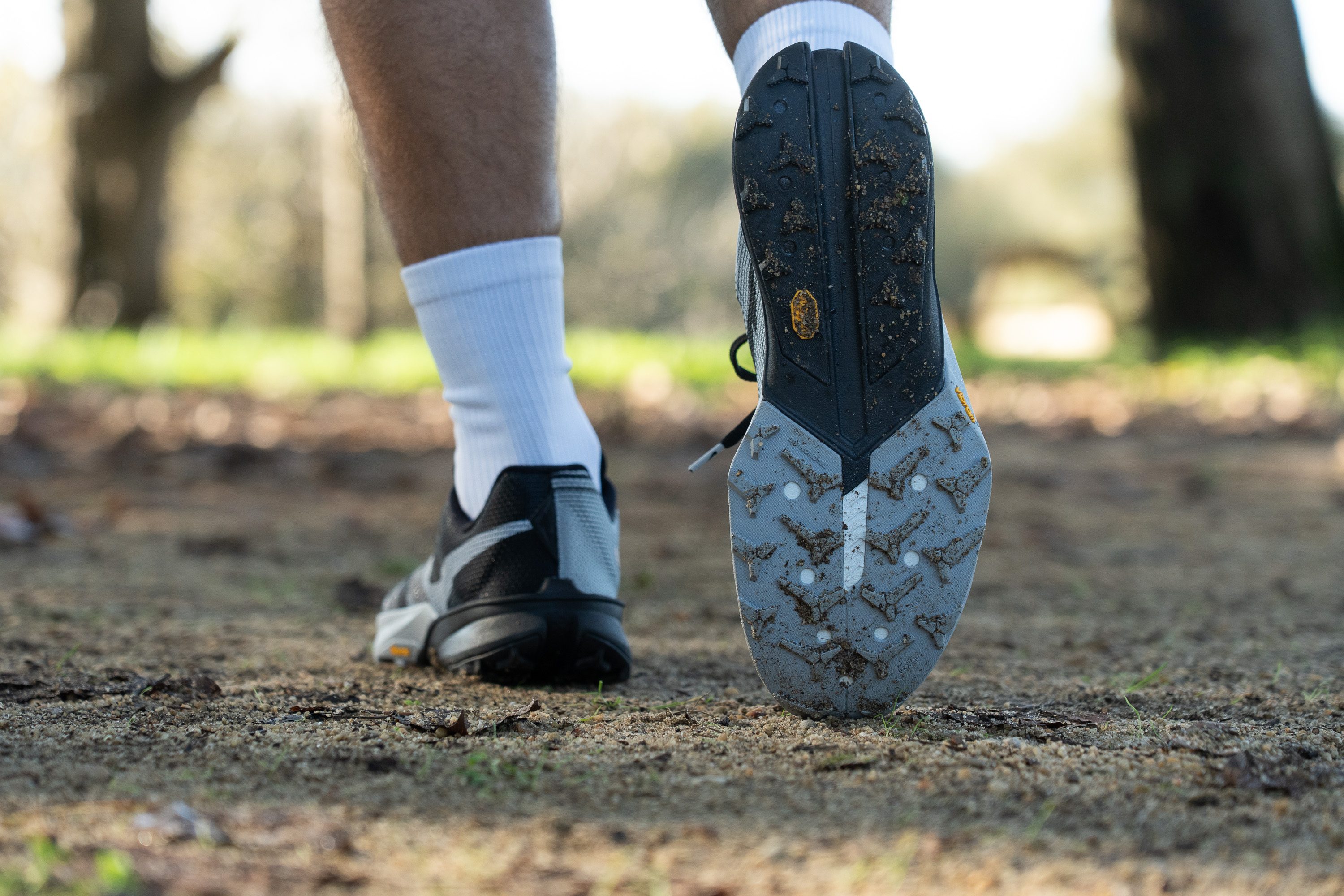
Flexibility / Stiffness
Another key test for the Kiger 10 is this one, because a stiff build could ruin the flexible and adaptable feel many look for in a shoe like this. Gladly, we recorded only 11.6N in our 30-degree bend test, which is ideal.
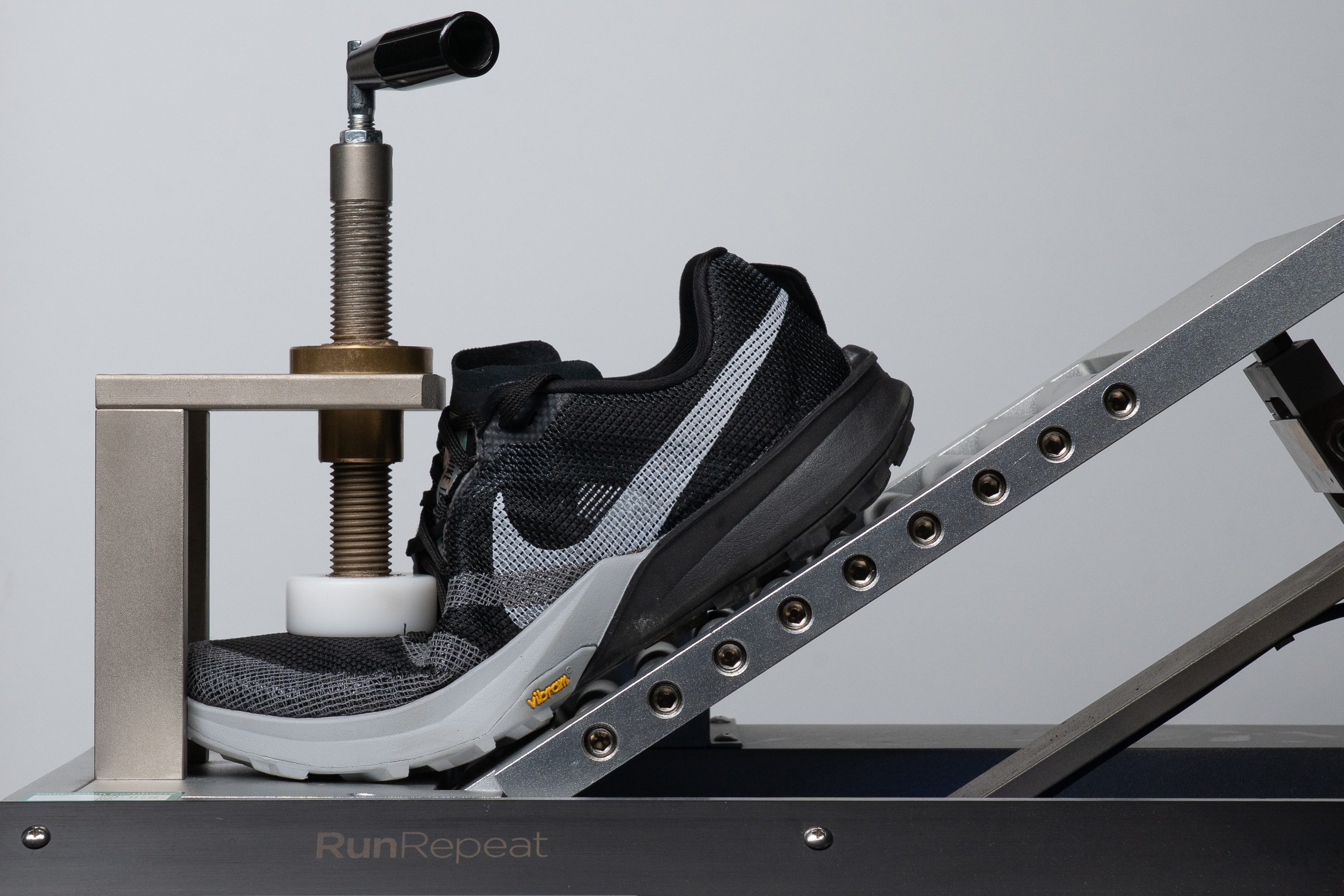
| Kiger 10 | 11.6N |
| Average | 14.6N |
Weight
The Kiger 10 weighs 9.2 oz or 261g on our scale. That is another improvement over the last three versions, and it marks a clear step forward for Nike.
However, we cannot avoid thinking that the shoe could be even lighter, which matters a lot for a low-stack racer, simply by using a supercritical EVA foam or (even better) a Pebax option like ZoomX. It feels like a missed chance, even though the progress over version 9 is still positive news.
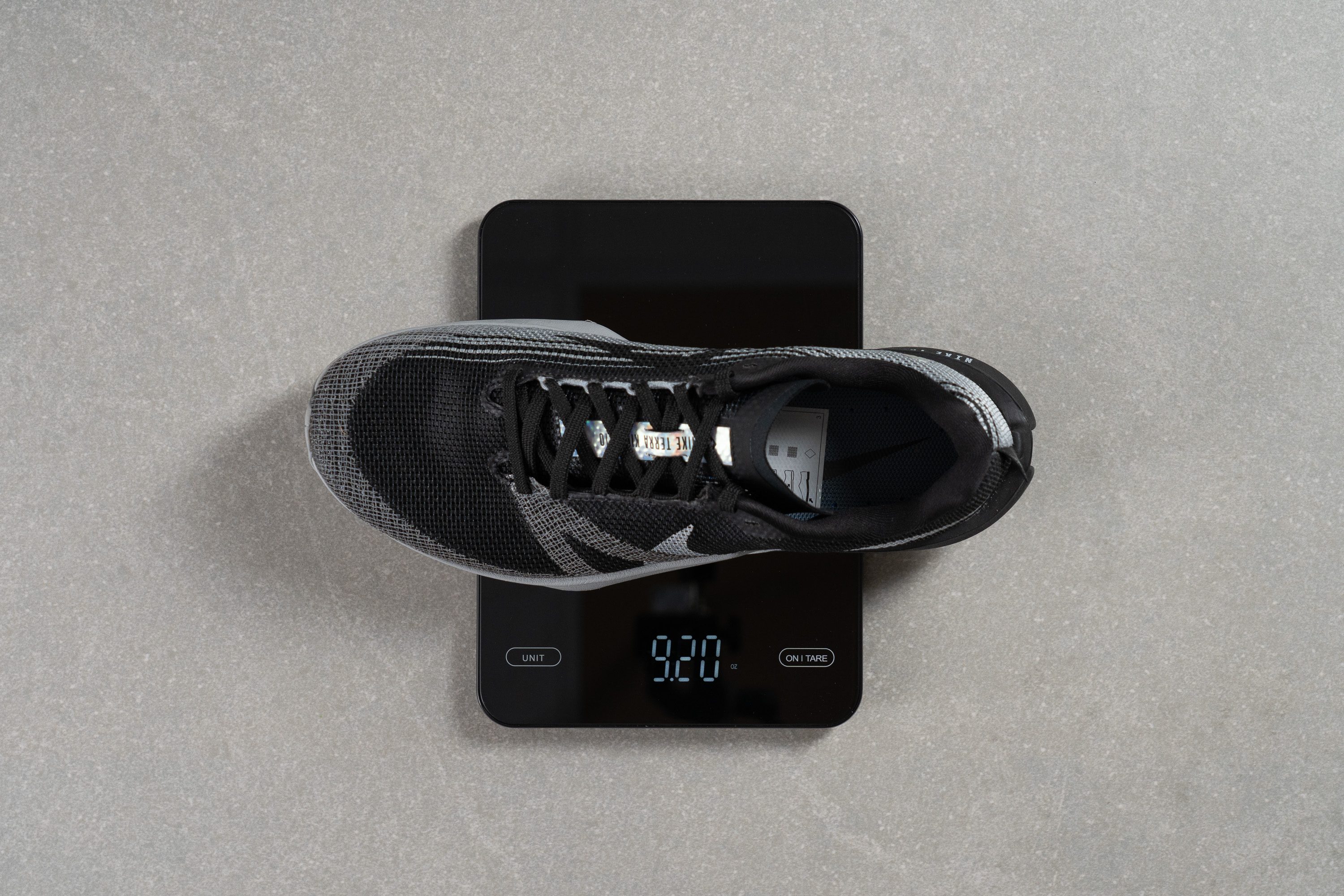
| Kiger 10 | 9.2 oz (261g) |
| Average | 10.2 oz (289g) |
Breathability
Trail shoes sometimes struggle with ventilation because of thicker or reinforced uppers, and that can be a real issue during hot summer runs. But that is not the case with the Kiger 10.
When we connected our smoke-pumping machine to the toebox with a custom 3D-printed adapter, we discovered excellent airflow. It is one of the few trail shoes to reach a perfect 5/5 in this test.
After that, we placed the upper over a light source and saw that Nike clearly aimed for a lightweight design, and they succeeded. We will check later if durability keeps up, but things look promising.

Under the microscope, the material shows clean openings for air to pass through and a high level of build quality. There is nothing negative to point out here.
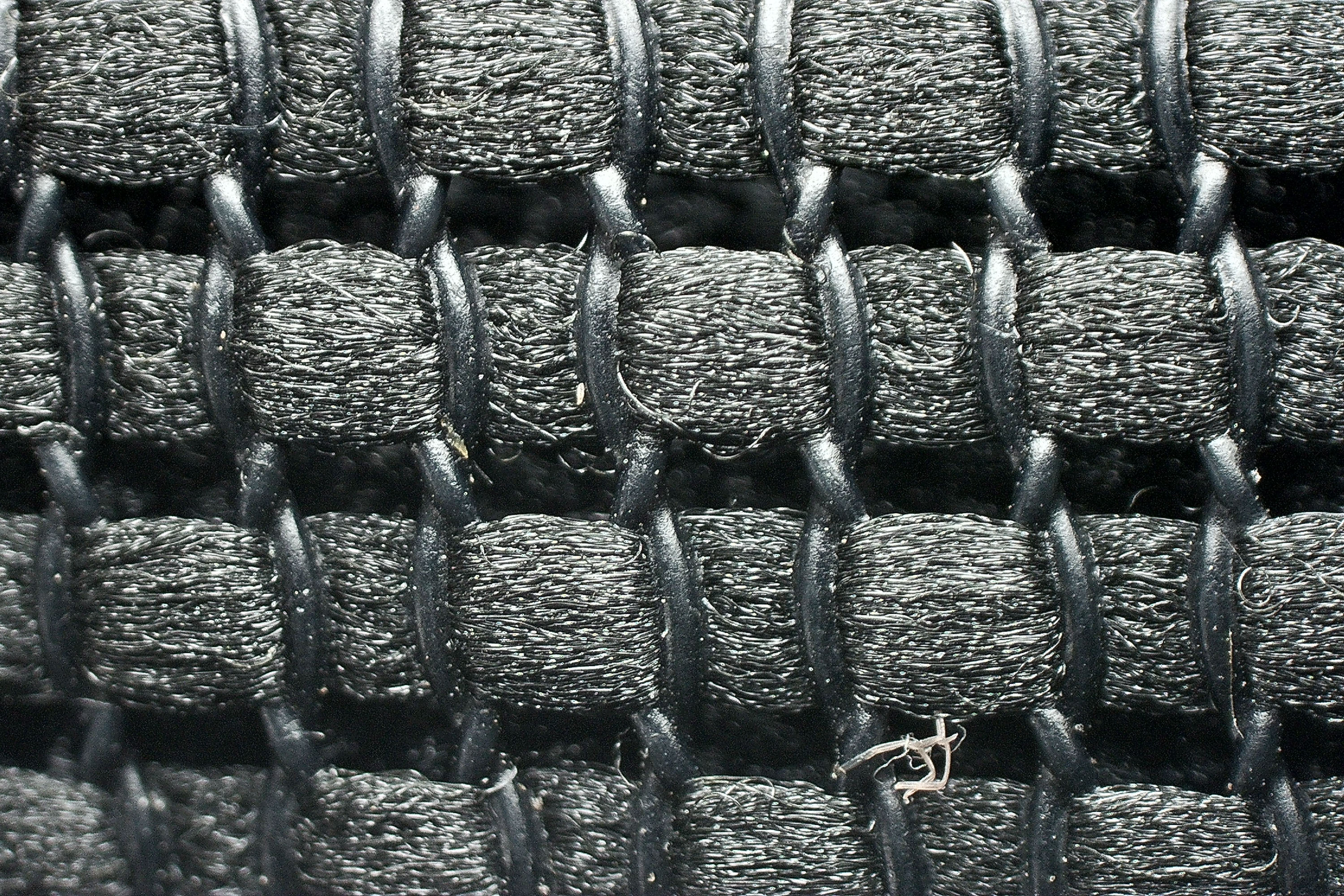
It may not be the most comfort-focused upper, but this shoe is not designed for long runs or ultras. For its intended purpose, it is ideal.
| Kiger 10 | 5 |
| Average | 3.2 |
Stability
Lateral stability test
The Kiger 10 has a compact shape with a narrow heel, and stability is clearly not its main focus.
Even so, the low-ish stack height keeps it from feeling unstable, but if you need solid support this is not the right match. Here you get a fun, natural, fast-moving ride where your legs do the work to stay steady on flat terrain, and we discovered this clearly while testing the shoe.
Torsional rigidity
It was important for this shoe to have low torsional rigidity, and thankfully it delivers. With a score of 2/5, it follows the foot easily and flexes without resistance, helping it adapt to tight turns and uneven terrain where a more natural feel is preferred on trails.
| Kiger 10 | 2 |
| Average | 3.6 |
Heel counter stiffness
The heel counter follows the design of road daily trainers, scoring a straightforward 3/5 on our scale and offering just a bit of support. More rigidity would have been a bad idea because there is not much padding to balance it out, and this shoe is not about comfort.
| Kiger 10 | 3 |
| Average | 3 |
Midsole width - forefoot
We hinted at the moderate dimensions of the Kiger 10, and the forefoot delivers exactly that at 112.6 mm.
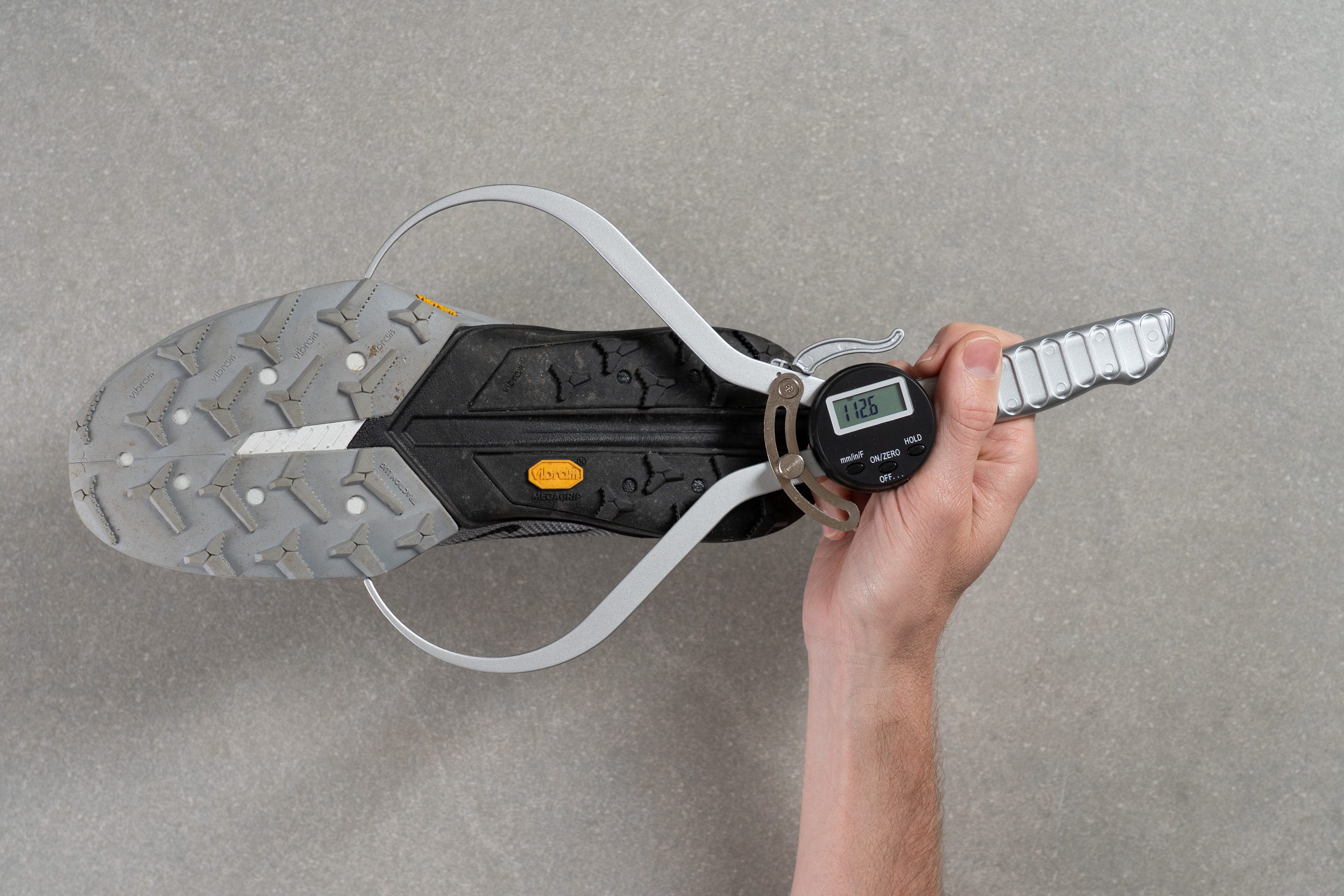
| Kiger 10 | 112.6 mm |
| Average | 112.8 mm |
Midsole width - heel
On the other hand, the heel is narrower at only 83.5 mm.
While this may look like a drawback for some, the market is full of big shoes with wide heels, and having one that feels agile underfoot and avoids early heel contact on twisty downhills is very welcome.
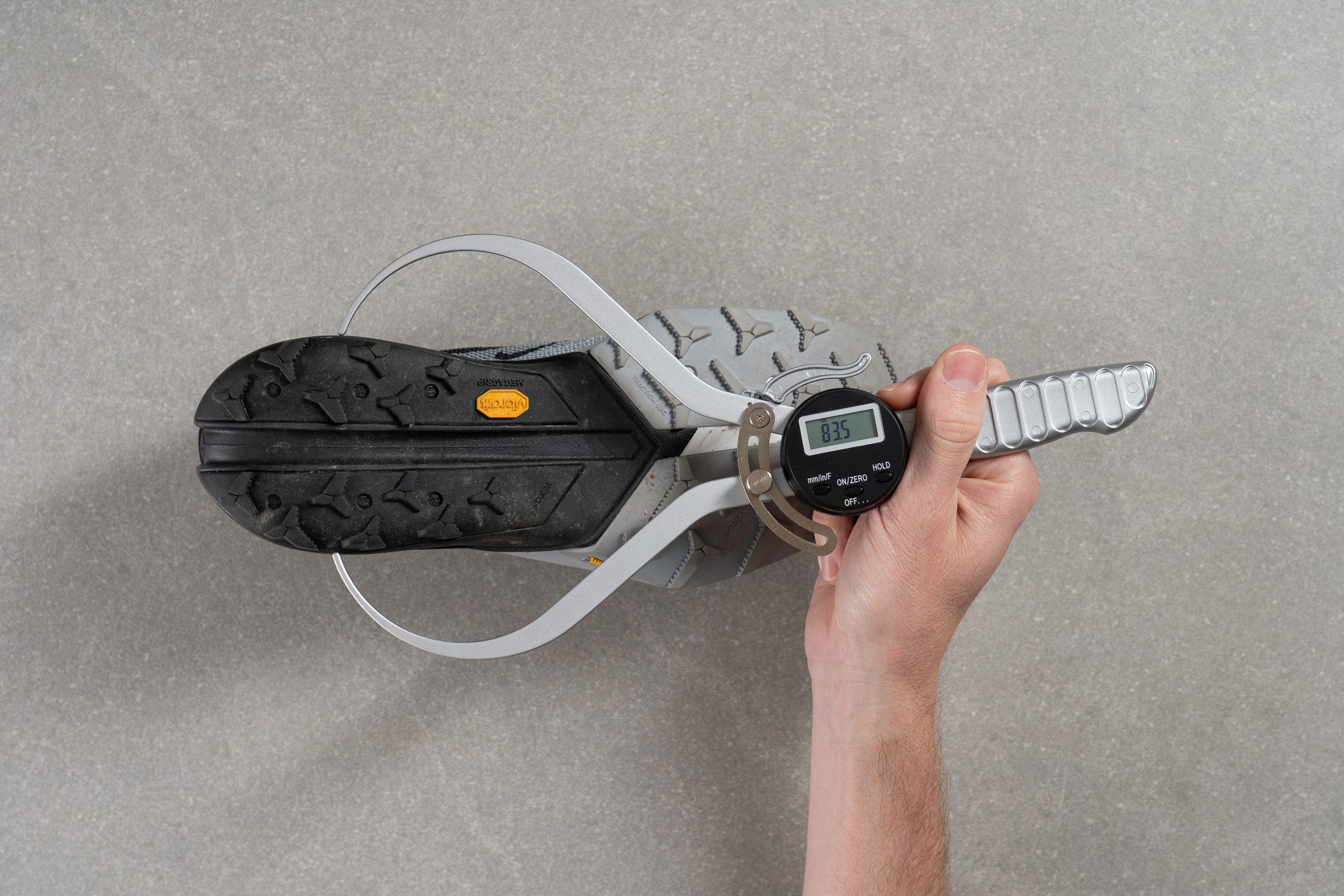
| Kiger 10 | 83.5 mm |
| Average | 89.8 mm |
Durability
Toebox durability
We always start our set of durability tests with the toebox, revving the Dremel up to 5K RPM and applying 2N of force against the upper.
Well, turns out the Kiger 10 is one of the few shoes that reached the top score (5/5) in our lab, showcasing impressive and extra-durable resistance to abrasion and making it ideal for wild adventures.
| Kiger 10 | 5 |
| Average | 3.1 |
Heel padding durability
But wait for it, because the heel padding also excelled and recorded another 5 out of 5. This is almost unheard of and makes this upper one of the most durable we have ever tested.
| Kiger 10 | 5 |
| Average | 3 |
Outsole durability
To our delight, the hat-trick of durability materialized with another excellent score. Thanks to the new Vibram outsole, the Kiger 10 also joins the elite group for outsole durability, as only 0.5 mm was erased, showing that if you want a shoe that lasts forever, this is it.
| Kiger 10 | 0.5 mm |
| Average | 0.9 mm |
Outsole thickness
The outsole measures just 1.6 mm in thickness, and while that is lower than average, the forefoot rock plate helps balance it out.
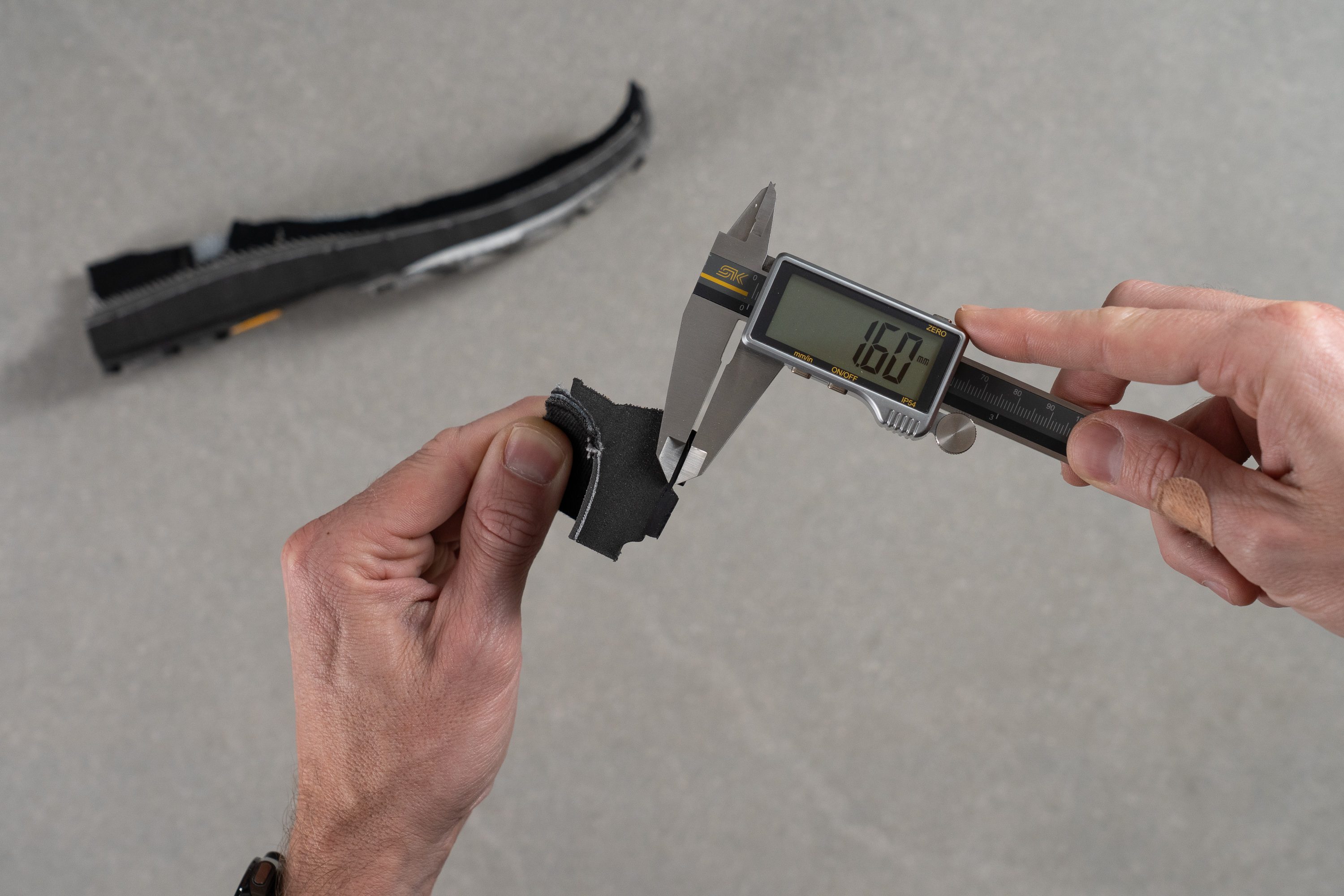
| Kiger 10 | 1.6 mm |
| Average | 2.2 mm |
Misc
Insole thickness
Following the design ethos of the Kiger series, the insole also stays on the thinner side.
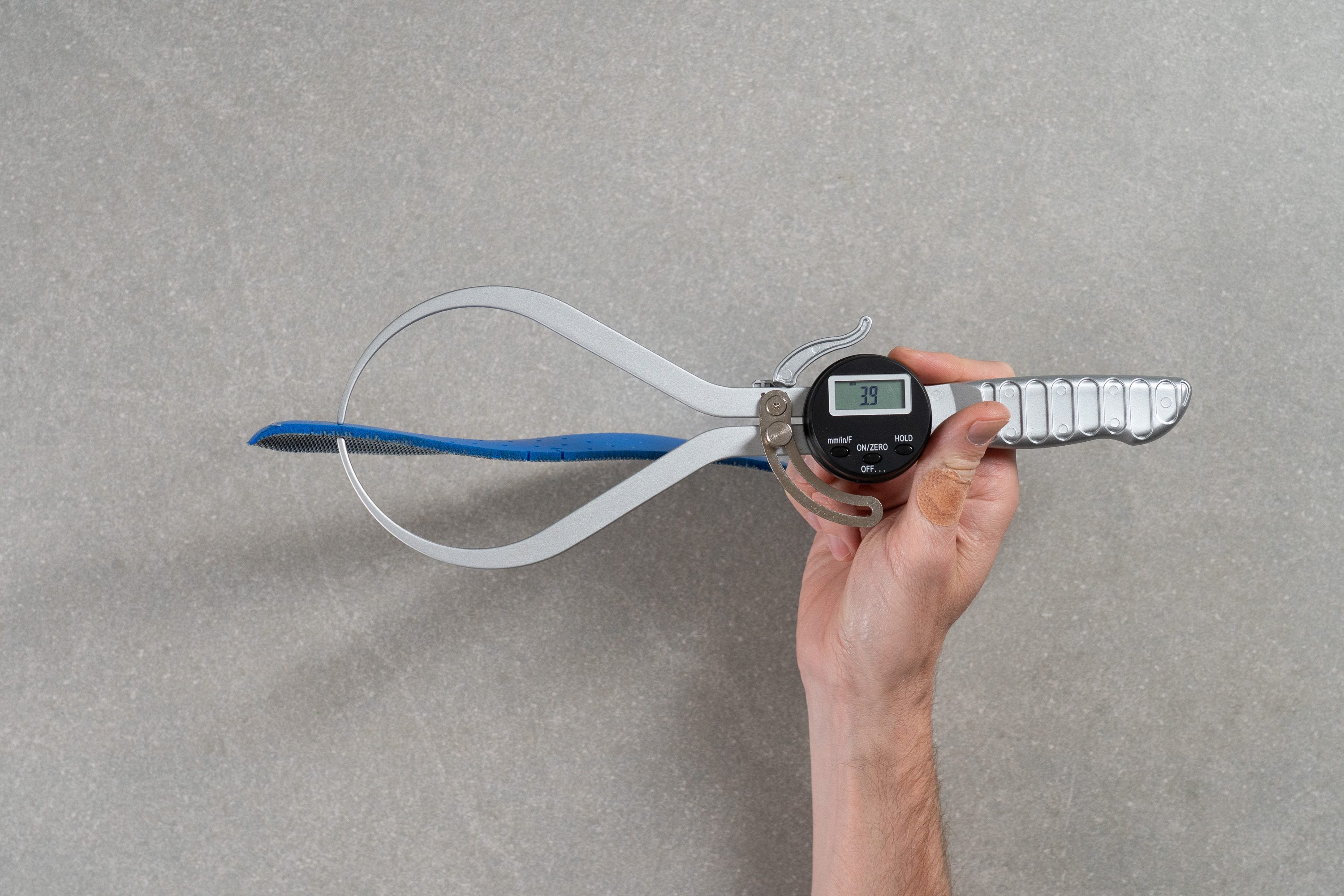
| Kiger 10 | 3.9 mm |
| Average | 4.7 mm |
Removable insole
The insole in the Kiger 10 is fully removable, but taking it out means losing the breathability from its perforations. This is a premium touch not very common in Nike shoes, so unless it is strictly needed, we would keep it in place.
| Kiger 10 | Yes |
Midsole softness in cold (%)
Nike gave us EVA foam in the midsole, and the result is a shoe that gets much firmer in cold temperatures. We measured a 42% change in softness after 20 minutes in the freezer, and that left us frozen!
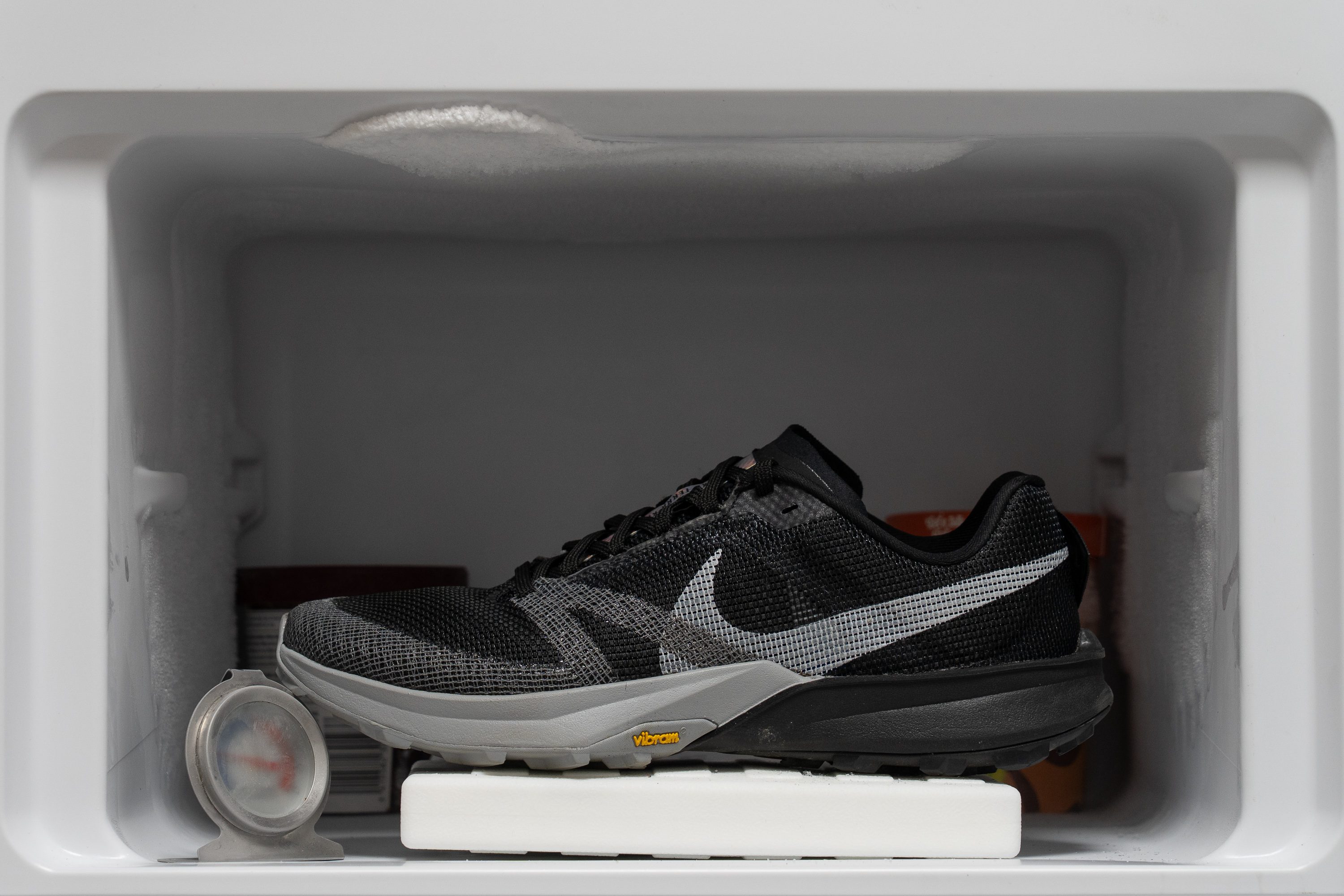
| Kiger 10 | 42% |
| Average | 26% |
Reflective elements
The Kiger 10 uses the same small circular reflective elements seen on other Nike trail shoes, and while they do the job, both the size and brightness could be better.
| Kiger 10 | Yes |
Tongue padding
The lacing system uses lace loops instead of punched eyelets, which is common for shoes with thin tongues, and we discovered that it works well even if long-term durability is usually a mystery with this setup.
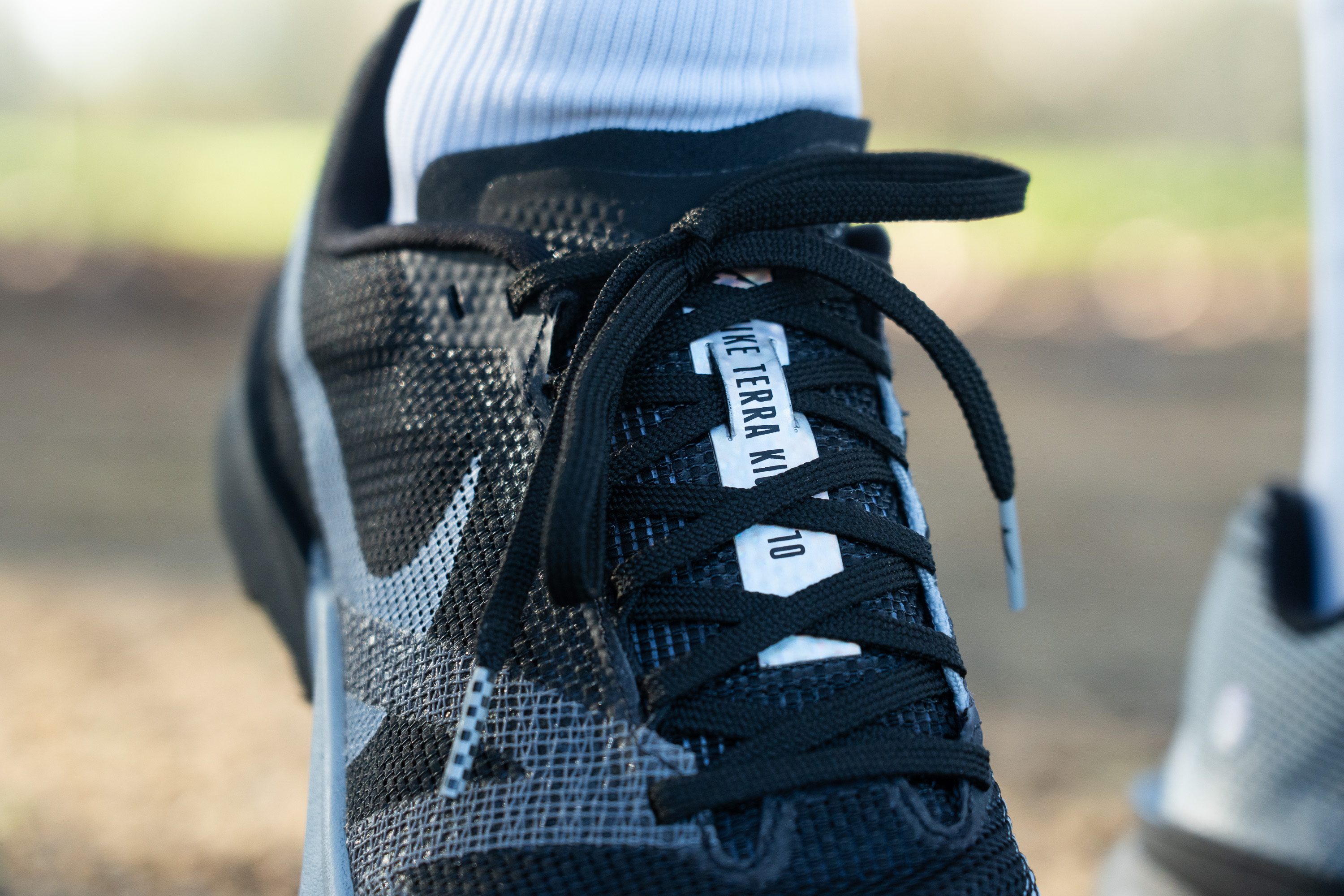
It was also fun to notice the "NIKE TERRA KIGER 10" text on the tongue, showing that removing "Terra" from the name was a late change after the shoe was already produced. And it's not the first time for Nike—we found the same thing in the Pegasus Plus.
Unlike most Nike designs, the tongue follows the agile style of the shoe and is strikingly thin at only 0.8 mm, so there is very little room for error when lacing it down. Be careful!

| Kiger 10 | 0.8 mm |
| Average | 6.4 mm |
Tongue: gusset type
The tongue is fully gusseted, as it should be in any trail shoe, keeping debris out of the toebox and improving lockdown by preventing unwanted tongue movement.
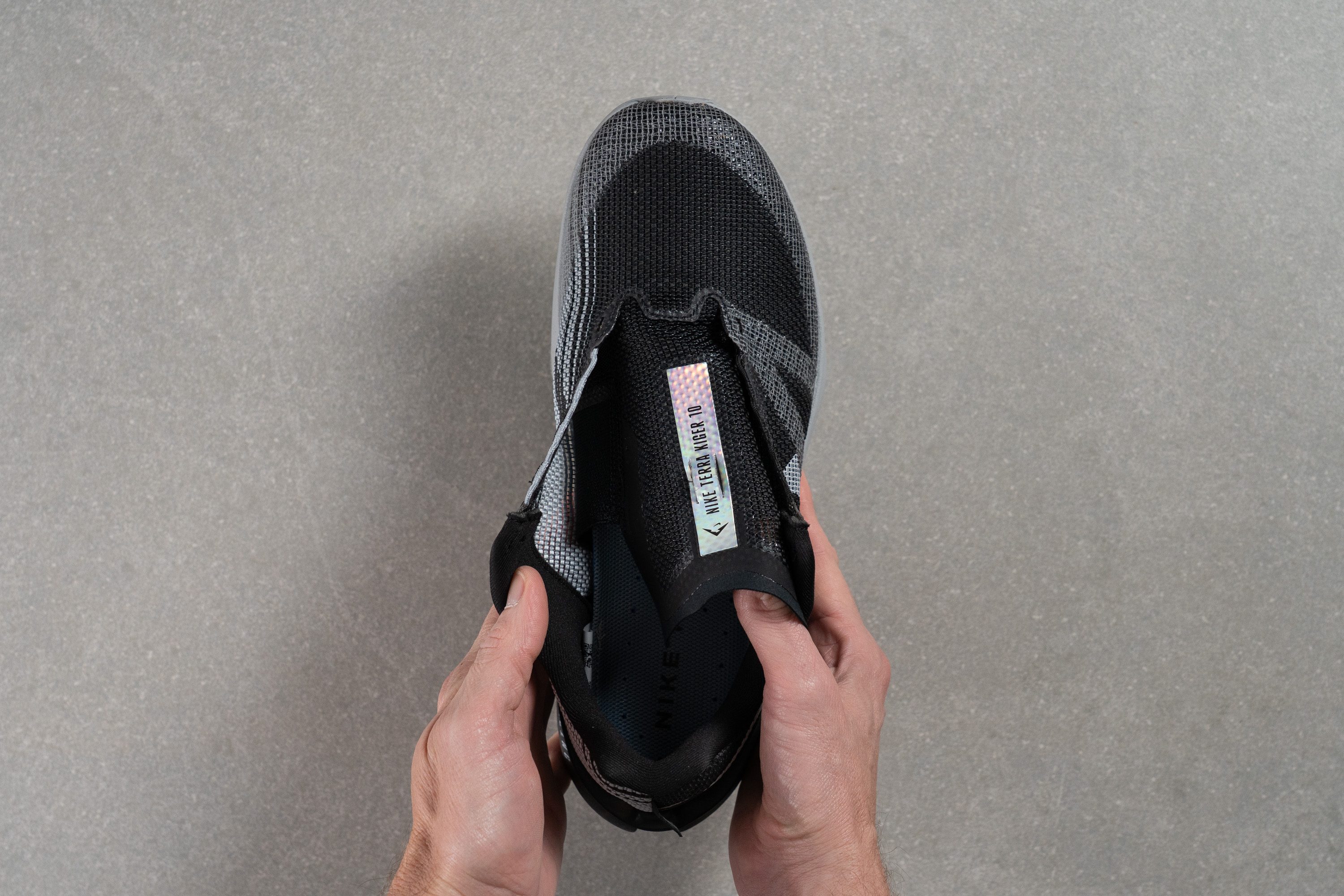
| Kiger 10 | Both sides (full) |
Price
In our view, the price of the Kiger 10 can feel good or bad depending on what you want. It seems a bit overpriced for its performance because of the low-cost EVA foam, yet it feels fair if a state-of-the-art Vibram outsole and a durable build are your main priorities.
| Kiger 10 | $160 |
| Average | $152 |
Heel tab
The small rear tab is too tiny to be grabbed, so it works more as a decorative detail than anything else.
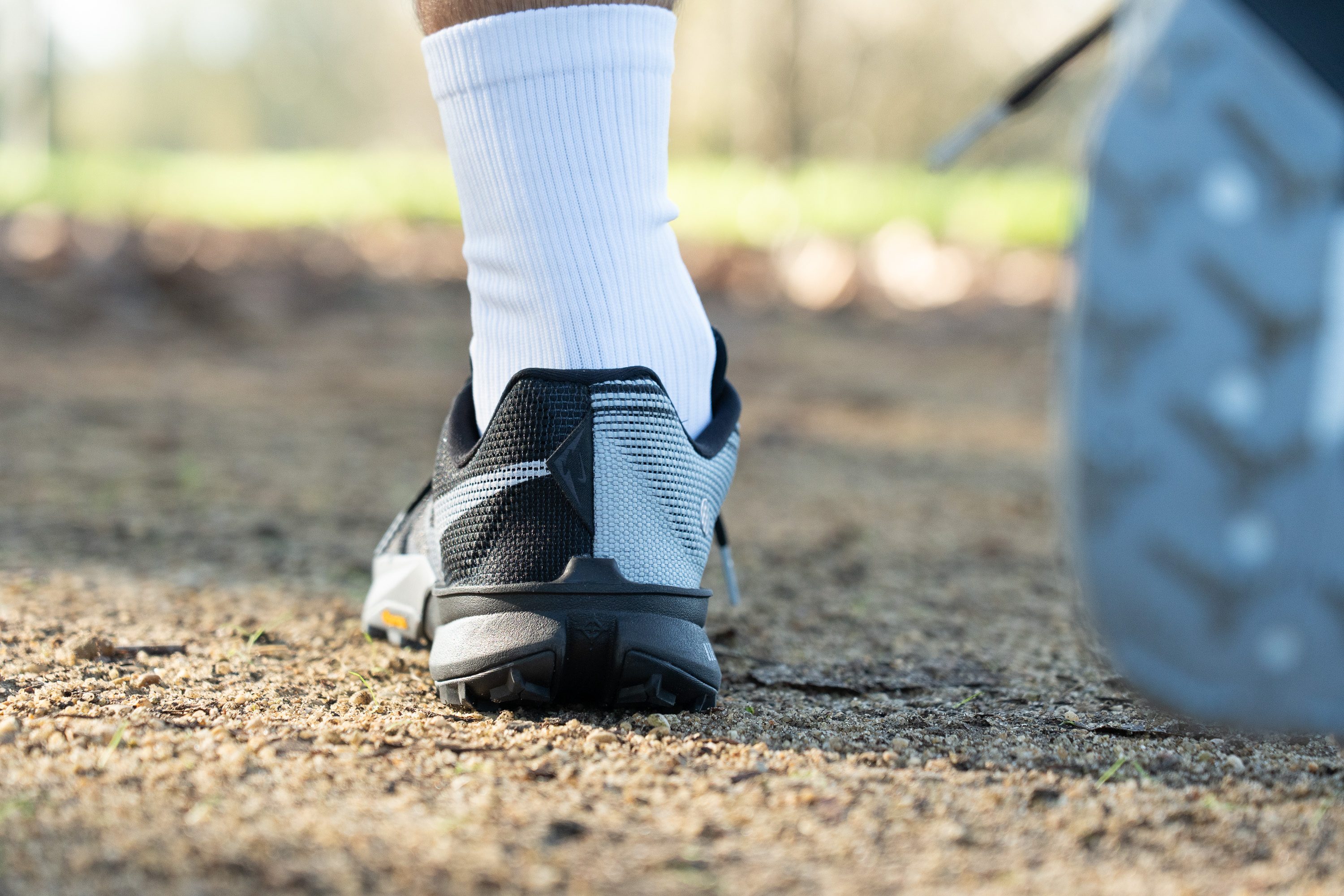
| Kiger 10 | None |

